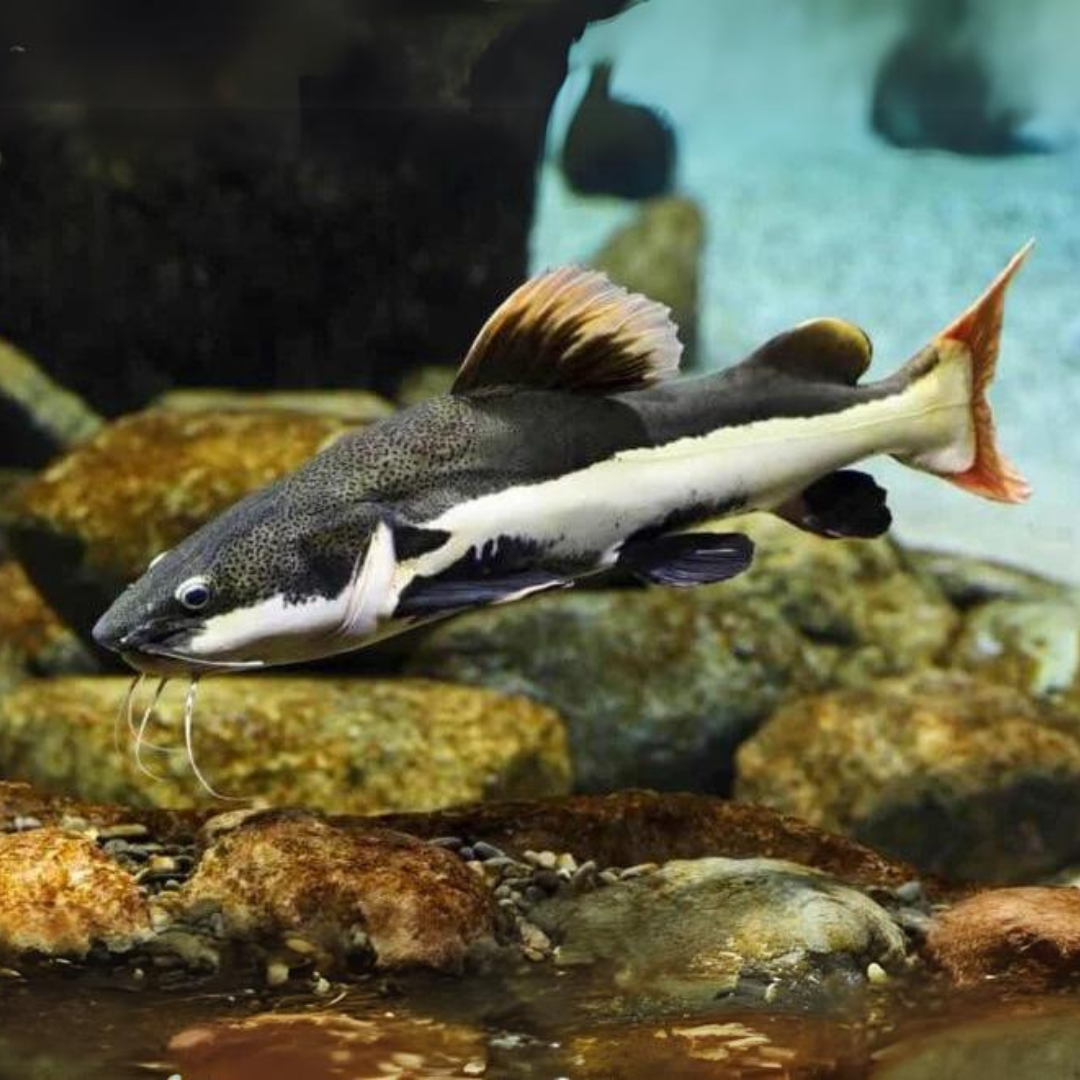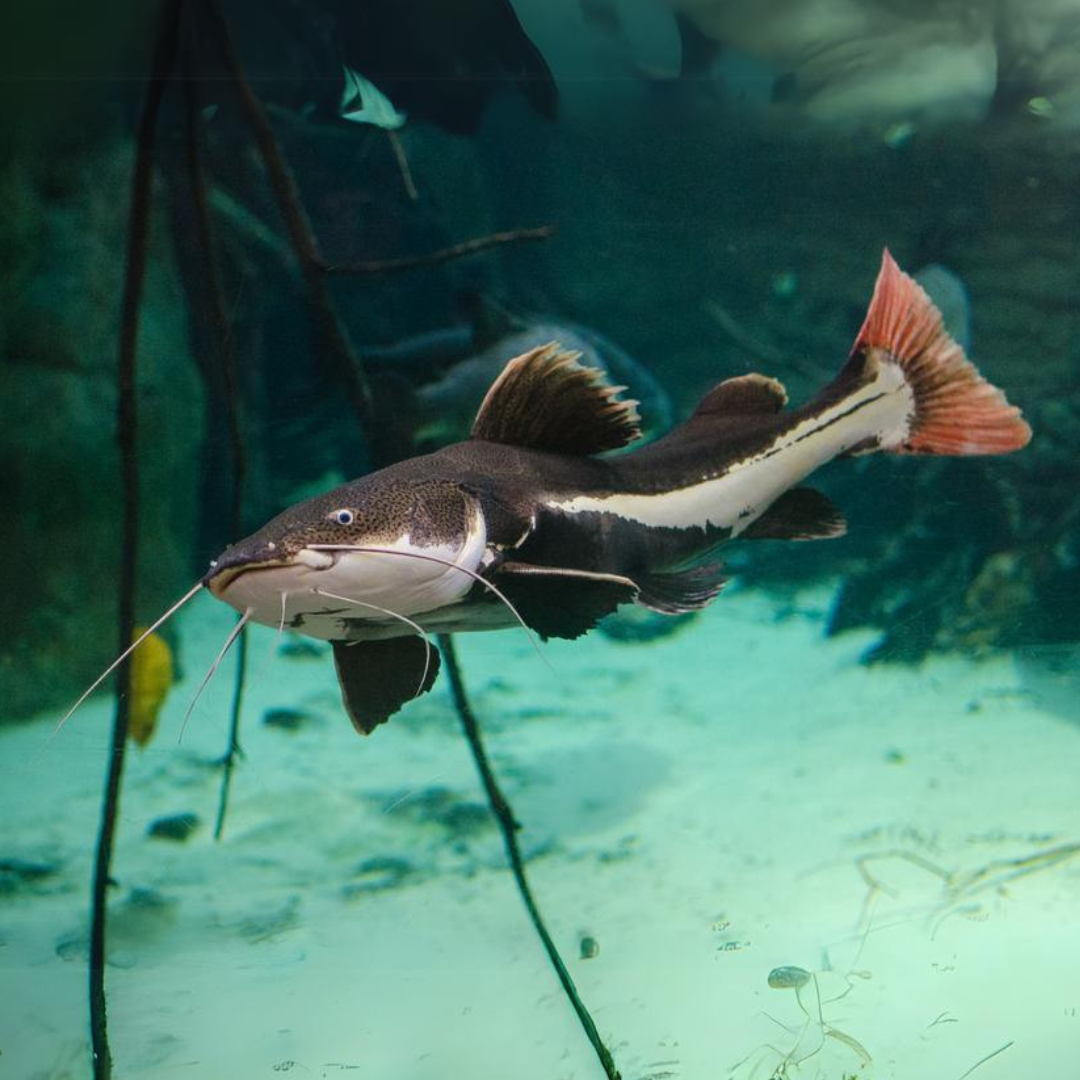Red Tail Cat (2-3 Inches) | Single
Red Tail Cat (2-3 Inches) | Single is backordered and will ship as soon as it is back in stock.
Couldn't load pickup availability
Description
Description
The Red Tail Catfish (Phractocephalus hemioliopterus) is a striking and impressive freshwater species known for its vibrant coloration and distinctive appearance. Though it is a juvenile at 2-3 inches, it already displays the features that make it a captivating addition to large aquariums.
Appearance:
The Red Tail Catfish is renowned for its eye-catching look. At 2-3 inches, it showcases its characteristic features in a smaller form. The fish has a sleek, elongated body with a predominantly dark gray or black coloration. Its most notable feature is its vivid red tail, which provides a dramatic contrast against the darker body. The catfish's fins are also often highlighted with shades of red or orange. Its broad head is equipped with large, sensitive barbels that aid in navigation and foraging. As it matures, the Red Tail Catfish's size and coloration will become even more pronounced, making it a striking centerpiece in any large tank.
Behavior and Temperament:
The Red Tail Catfish is known for its active and curious nature. Juveniles are generally more manageable but can become more assertive and demanding as they grow. It is a solitary fish that may become territorial, especially as it matures. In captivity, it is essential to provide a spacious tank with ample swimming room and hiding spots to accommodate its growing size and active behavior. This species is best kept in large aquariums with other robust fish that can tolerate its assertiveness.
Habitat Requirements:
To ensure the well-being of the Red Tail Catfish, a large, well-maintained aquarium is crucial. Due to its potential size, a tank of at least 340 litres is recommended for juveniles, with larger tanks required as the fish grows. The water should be kept at a temperature range of 72-78°F (22-26°C) with a pH level between 6.5 and 7.5. Providing a substrate of sand or gravel along with some large rocks or driftwood can help create a natural environment. Good filtration and regular water changes are important to maintain water quality, as this species produces a significant amount of waste.
Diet:
The Red Tail Catfish is an omnivorous species with a hearty appetite. In captivity, it should be fed a varied diet that includes high-quality pellets, live or frozen foods such as fish, shrimp, and worms. The fish's diet should be rich in protein to support its growth and overall health. Feeding should be done in small portions several times a week to prevent overfeeding and to maintain water quality.
Care and Compatibility:
Given its large potential size and territorial nature, the Red Tail Catfish is best suited for a tank with other large, robust fish that can handle its presence. It is not ideal for smaller or more passive tank mates. Regular tank maintenance, including monitoring water parameters and ensuring adequate filtration, is essential for keeping this species healthy.




